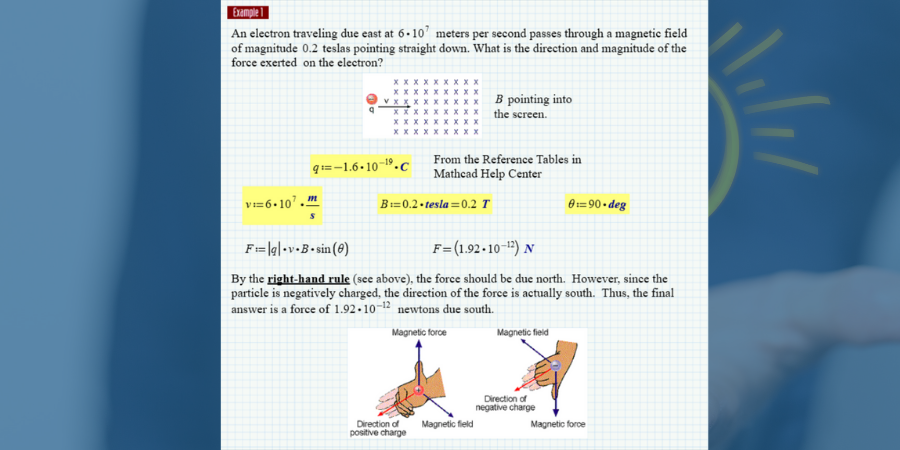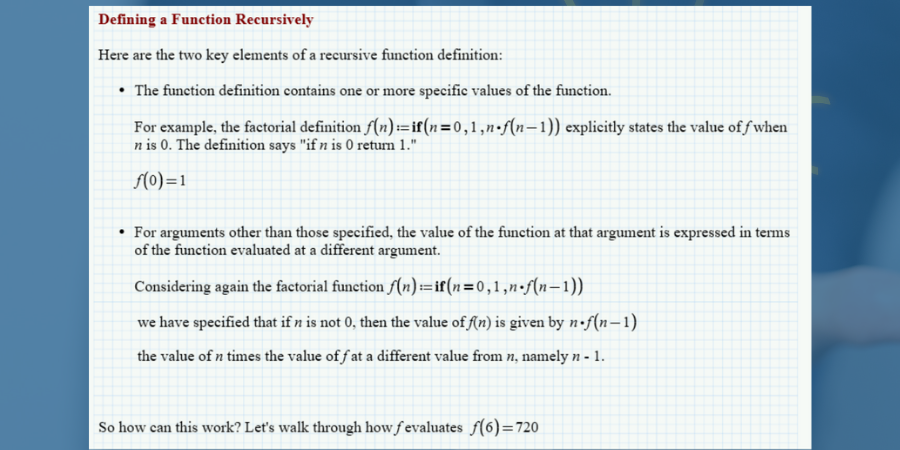
One of my favorite offerings for learning how to use PTC Mathcad are the online Worksheets and Worksheet Collections. These are real live PTC Mathcad worksheets full of engineering calculations, so you can use either Save As or Copy and Paste to leverage the existing work – saving you time and effort.
I like to use them when I get stuck on a problem and want to consider new avenues, especially functions and tools I didn’t know existed. Here are my personal favorite three collections for getting unstuck and finding inspiration:
A physics professor once told me that “the universe is the physical manifestation of an infinite set of physics equations happening simultaneously.” There’s just something inherently beautiful in rendering the phenomena of light, forces, energy, and motion into mathematical terms.
Given that I work for a human spaceflight company, I like the worksheet on escape velocity. As an avionics engineer, I like the electricity and magnetism like Ohm’s Law – the basis for calculating wire diameter in cable harness design – and Faraday’s Law.

In college, Thermodynamics was my only engineering class at 9:00 a.m. – so I didn’t do so well in that course. However, using worksheets to review the topics on specific heat and the First and Second Laws of Thermodynamics helps me with the steady state and transient thermal analyses I perform in Creo Simulate today.
As covered in the blog post, Programming in PTC Mathcad, I’m a huge fan of the power of programming. You can use these tools to process large datasets and construct matrices of new data. I use loops and conditionals extensively in conjunction with both built-in and user-defined functions. However, while perusing the available worksheets, I learned that programs can incorporate recursion – a program can call itself!

Other areas that I am inspired to explore include string functions, error trapping and messages, and the use of the Include command to call other worksheets just like computer programs. I’ve been thinking about more ways to use PTC Mathcad for personal productivity – like Fantasy Football – and the tools in the programming collection have given me some ideas.
I like the way that MIT’s Open Courseware explains this subject: “Differential Equations are the language in which the laws of nature are expressed.” Examples of real world uses for differential equations in engineering include:
The Differential Equations collection is essentially a course that takes you through the subject, with real-world examples solved step-by-step in live PTC Mathcad worksheets that you can experiment with and use yourself. It covers first-order, second-order, and higher-order equations; linear and non-linear; and systems and series of equations.
Earlier I mentioned the physics collection worksheet on escape velocity. Here’s a second example, this time using differential equations:

Seeing the same problem solved using different tools helps me keep an open mind for exploring multiple solutions to the same problem.
What I love most about all the worksheet collections is that they spark new ideas for how you can apply PTC Mathcad to your product development problems. I highly recommend you download these worksheets and read through them to see how you can apply them to your engineering challenges. Next time you’re brainstorming a new problem, find a related collection and see where it can take you.